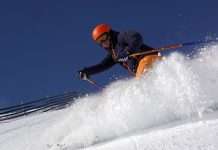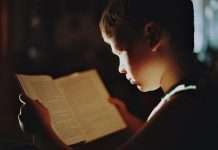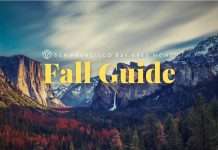 On Monday, August 21st, the first total eclipse of the sun since 1979 is happening, and it’ll be the first one visible across the entire country since 1918. Needless to say, this rare event, in which the moon passes between the earth and the sun, is not to be missed.
On Monday, August 21st, the first total eclipse of the sun since 1979 is happening, and it’ll be the first one visible across the entire country since 1918. Needless to say, this rare event, in which the moon passes between the earth and the sun, is not to be missed.
Here in San Francisco, we won’t get to see the sun 100% blocked by the moon (you’d have to venture up to Oregon to see that), but we will see it about 78% covered. Here’s what you need to know.
When
Start of eclipse: 9:01 AM
Maximum eclipse: 10:15 AM (lasting for about 2 minutes)
End of eclipse: 11:37 AM
Where
As long as you have an unobstructed view of the sun, you’ll be able to witness the partial solar eclipse from anywhere in the city, but there are also special viewing events happening in the area.
California Academy of Sciences: If the sky is clear, solar telescopes will be brought out to observe the partial eclipse from the roof and East Garden, starting at 9:30 a.m. If the eclipse is not visible due to cloud coverage, a live internet feed will be available in the Naturalist Center and via monitors on the museum floor.
Exploratorium: The museum will open early at 9 a.m. for the three-hour live stream of the eclipse, and visitors will be able to watch the partial solar eclipse outside on the Exploratorium’s Plaza.
Bay Area Discovery Museum: From 10 a.m. to noon, children can make pinhole viewers to watch a partial eclipse, as well as other space-themed activities like making a planet from translucent colored plastic and simulating an eclipse around a light source.
Viewing Safety
It won’t be safe to stare directly at the eclipse, since the sun will still be partially visible and can cause severe damage to your eyes. The California Academy of Science gift shop is selling solar eclipse glasses for safe viewing and are encouraging viewers to buy them soon, before they sell out. If you’re willing to pay a premium, Amazon still has glasses available that can be shipped in time.
Better yet, make a pinhole projector with your kids. Follow these easy instructions for a Simple Card Projector or Box Projector.
Conserving Energy
During the eclipse, the sky will be much darker than usual, and you may be inclined to turn on more lights. However, the utility companies are requesting that we avoid doing this, in an effort to conserve energy.
The solar eclipse is actually a great prompt to make us more conscious of our energy consumption, and if you’re interested in learning how to earn money by saving energy in your home, check out our post about OhmConnect.
Explaining the Eclipse to Your Kids
Children attending public schools in San Francisco will get to experience the solar eclipse on their first day of school, which is sure to make it an extra memorable start to the year. Whether your child will be in school or not, it’s fun to get excited about this special event in advance of the big day.
The educational show Space Racers has created a special website for children ages 2 to 11 years old that’s devoted to the solar eclipse. It explains the phenomenon, suggests activities, and offers advice to safely watch the eclipse . You can also download a free map and viewing guide.
The solar eclipse is a great excuse to spend more time as a family, as you and your children brush up on astronomy basics and marvel at the rarity of this event. Our children are naturally born with a sense of awe and wonder at the world around them, and this eclipse is a great chance for us adults renew those feelings, too!



















